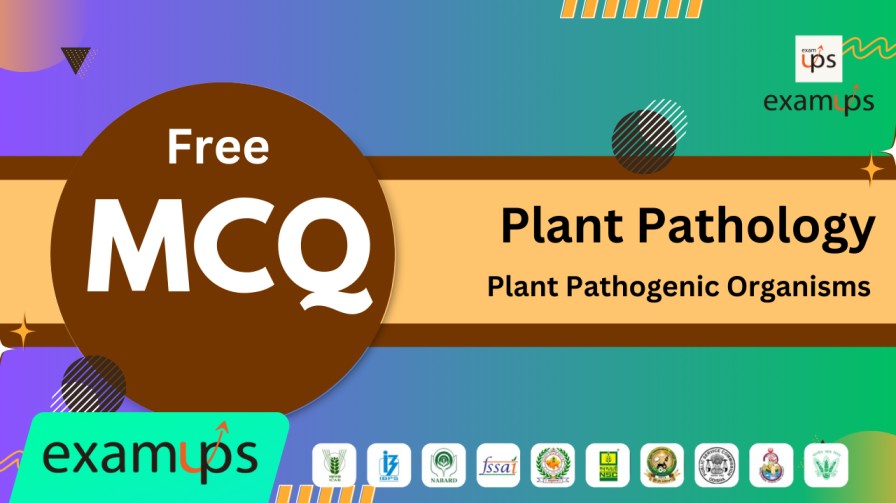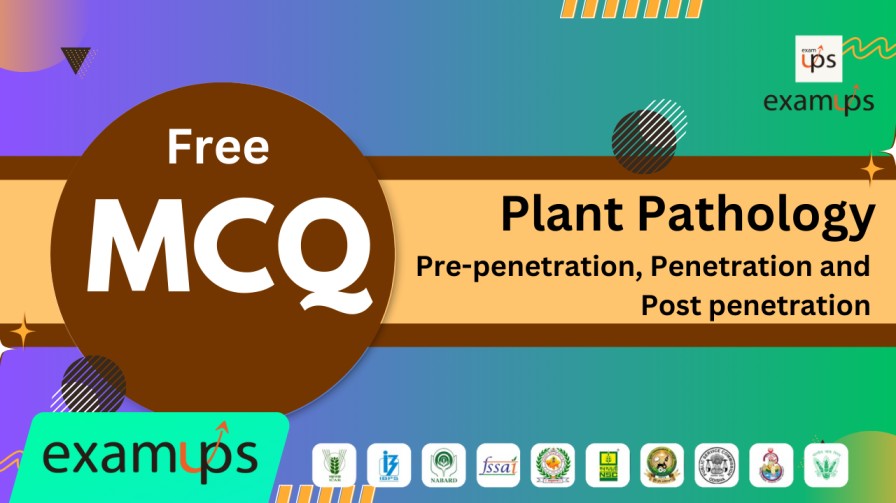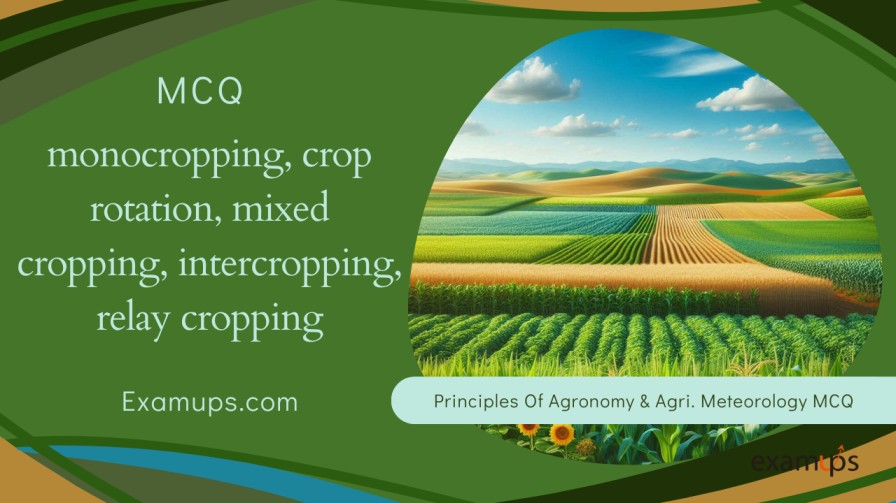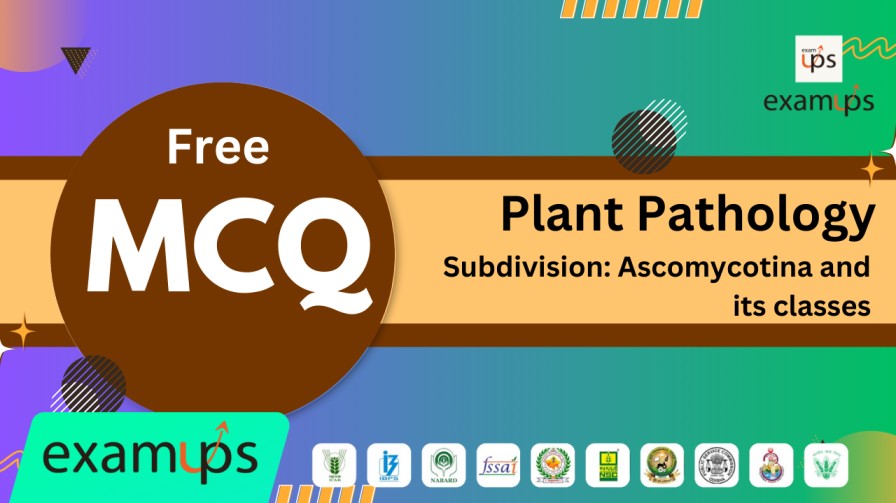- Which type of organism causes Citrus canker?
- A. Fungi
- B. True bacteria
- C. Protozoa
- D. Virus
Answer: B
- Citrus greening and Pierce’s disease of grapes are caused by which group of pathogens?
- A. True bacteria
- B. Rickettsia-like bacteria
- C. Mycoplasma-like organisms
- D. Viruses
Answer: B
- Which pathogen causes Sesame phyllody and eggplant little leaf?
- A. Spiroplasma
- B. Mycoplasma-like organism (MLO)
- C. Algae
- D. Viroids
Answer: B
- What is an example of a disease caused by Spiroplasma?
- A. Corn stunt
- B. Wilt of cotton
- C. Red rust of mango
- D. Yellow mosaic of blackgram
Answer: A
- Which type of organism is the disease “heart rot of coconut” caused?
- A. Algae
- B. Protozoa
- C. Fungi
- D. Virus
Answer: B
- Which disease is caused by parasitic algae?
- A. Broomrape of tobacco
- B. Red rust of mango
- C. Root knot nematode
- D. Spindle tuber of potato
Answer: B
- Which parasitic flowering plant causes broomrape of tobacco?
- A. Protozoa
- B. Phanerogamic parasite
- C. Algae
- D. Fungi
Answer: B
- Root knot nematode is an example of which type of pathogen?
- A. Biotic agent
- B. Abiotic agent
- C. Mesobiotic agent
- D. Parasitic flowering plant
Answer: A
- Viruses and viroids are classified under which category of agents?
- A. Biotic agents
- B. Mesobiotic agents
- C. Abiotic agents
- D. Eukaryotic agents
Answer: B
- Which disease is caused by viroids?
- A. Citrus canker
- B. Spindle tuber of potato
- C. Yellow mosaic of blackgram
- D. Corn stunt
Answer: B
- What are the abiotic agents responsible for plant diseases?
- A. Mesobiotic agents
- B. Fungi and bacteria
- C. Environmental factors
- D. Viruses and viroids
Answer: C
- Which of the following is an example of a disease caused by improper soil moisture?
- A. Heart rot of coconut
- B. Damping off of seedlings
- C. Wilt of cotton
- D. Red rust of mango
Answer: B
- The primary structural component of fungal cell walls is:
- A. Cellulose or chitin
- B. Peptidoglycan
- C. Lipids
- D. Protein
Answer: A
- Who first reported the bacterial origin of plant disease?
- A. Adolf Mayer
- B. T. J. Burrill
- C. M. W. Beijerinck
- D. Robert Koch
Answer: B
- The first plant disease identified as being caused by a bacterium was:
- A. Fire blight of apple and pear
- B. Citrus canker
- C. Red rust of mango
- D. Wilt of cotton
Answer: A
- Fungi reproduce through:
- A. Simple fission
- B. Sexual and asexual spores
- C. Binary fission
- D. Plasmid transfer
Answer: B
- Which organism is eukaryotic and achlorophyllous with filamentous somatic structures?
- A. Bacteria
- B. Fungi
- C. Protozoa
- D. Viruses
Answer: B
- The primitive nucleus of bacteria is characterized by:
- A. A defined nuclear membrane
- B. Lack of a nuclear membrane
- C. Presence of nucleolus
- D. Multinucleate cells
Answer: B
- What is the approximate size of bacteria?
- A. 0.5 to 1.0 μm x 2.0 to 5.0 μm
- B. 5.0 to 10.0 μm x 10.0 to 20.0 μm
- C. 0.1 to 0.2 μm x 0.5 to 1.0 μm
- D. 1.0 to 2.0 μm x 5.0 to 10.0 μm
Answer: A
- The term “chlorophyll-free unicellular organisms multiplying by simple fission” refers to:
- A. Fungi
- B. Viruses
- C. Bacteria
- D. Protozoa
Answer: C
-
- What are fastidious vascular bacteria also known as?
- A. Phytoplasmas
- B. Rickettsia-like bacteria (RLB)
- C. Protozoa
- D. Spiroplasma
Answer: B
- Fastidious vascular bacteria reproduce through:
- A. Budding
- B. Binary fission
- C. Spore formation
- D. Vegetative propagation
Answer: B
- RLB are restricted primarily to which plant tissues?
- A. Xylem and phloem
- B. Leaf mesophyll
- C. Cortex and epidermis
- D. Root cortex
Answer: A
- Which of the following is NOT a transmission method for RLB?
- A. Leafhoppers
- B. Nematodes
- C. Mechanical inoculation
- D. Airborne spores
Answer: D
- The RLB causing phony disease of peach is named:
- A. Xylella fastidiosa
- B. Erwinia amylovora
- C. Agrobacterium tumefaciens
- D. Pseudomonas syringae
Answer: A
- Which disease is associated with xylem-limited RLB?
- A. Citrus greening
- B. Pierce’s disease of grapevine
- C. Clover club leaf
- D. Phyllody of sesame
Answer: B
- The primary insect vector for Pierce’s disease of grapevine belongs to which family?
- A. Cicadellidae
- B. Aphididae
- C. Psyllidae
- D. Thripidae
Answer: A
- What is a characteristic symptom of xylem-limited RLB infections?
- A. Marginal necrosis of leaves
- B. Witches’ broom
- C. Virescence of flowers
- D. Leaf mosaic
Answer: A
- Which drug is effective against RLB?
- A. Penicillin
- B. Tetracycline
- C. Sulfa drugs
- D. Both A and C
Answer: D
- Phloem-limited RLB were first recognized in which year?
- A. 1960
- B. 1970
- C. 1980
- D. 1990
Answer: B
- Citrus greening is primarily transmitted by which insect?
- A. Psyllina sp.
- B. Cicadellidae
- C. Aphididae
- D. Thripidae
Answer: A
- What is the primary difference between RLB and phytoplasmas?
- A. Phytoplasmas have a cell wall; RLB do not.
- B. RLB have a cell wall; phytoplasmas do not.
- C. RLB are restricted to xylem; phytoplasmas are not.
- D. RLB are larger than phytoplasmas.
Answer: B
- Phytoplasmas are sensitive to which drug?
- A. Penicillin
- B. Tetracycline
- C. Erythromycin
- D. Sulfa drugs
Answer: B
- Spiroplasma is an example of a:
- A. Wall-less helical prokaryote
- B. Phanerogamic parasite
- C. Non-tissue restricted RLB
- D. Abiotic pathogen
Answer: A
- Which disease is caused by spiroplasma?
- A. Corn stunt
- B. Clover rugose leaf curl
- C. Potato spindle tuber
- D. Marchitez suppressive
Answer: A
- Viruses differ from bacteria as they:
- A. Lack enzymes for metabolism
- B. Possess both DNA and RNA
- C. Can multiply on artificial media
- D. Are unaffected by environmental factors
Answer: A
- Viroids are different from viruses because they:
- A. Lack nucleic acids
- B. Contain only RNA
- C. Have a protein coat
- D. Infect only fungi
Answer: B
- The study of algae is called:
- A. Mycology
- B. Phycology
- C. Algology
- D. Both B and C
Answer: D
- Which of the following diseases is caused by protozoa?
- A. Red rust of mango
- B. Heart rot of coconut
- C. Little leaf of brinjal
- D. Phyllody of sesame
Answer: B
- What type of parasite is a phanerogamic parasite?
- A. Algal
- B. Fungal
- C. Flowering plant
- D. Bacterial
Answer: C
41. Diseases limited to a specific area of a plant organ are classified as:
a) Systemic diseases
b) Localized diseases
c) Air-borne diseases
d) Sporadic diseases
Answer: b) Localized diseases
42. Which of the following is an example of a systemic disease?
a) Leaf spots caused by fungi
b) Anthracnoses
c) Mosaics and leaf curls caused by viruses
d) Early leaf spot of groundnut
Answer: c) Mosaics and leaf curls caused by viruses
43. Damping-off caused by Pythium species is an example of:
a) Air-borne disease
b) Seed-borne disease
c) Soil-borne disease
d) Systemic disease
Answer: c) Soil-borne disease
44. Which of the following is an internally seed-borne disease?
a) Blast of rice
b) Loose smut of wheat
c) Citrus canker
d) Late blight of potato
Answer: b) Loose smut of wheat
45. A disease consistently occurring year after year in a particular region is known as:
a) Sporadic disease
b) Pandemic disease
c) Epidemic disease
d) Endemic disease
Answer: d) Endemic disease
46. An example of an endemic disease in Asia is:
a) Wheat stem rust
b) Powdery mildew
c) Citrus canker
d) Late blight of potato
Answer: c) Citrus canker
47. A sudden outbreak of disease over a wide area in severe form is called:
a) Sporadic disease
b) Endemic disease
c) Pandemic disease
d) Epidemic disease
Answer: d) Epidemic disease
48. Which of the following is a sporadic disease?
a) Fusarium wilt of cotton
b) Rice blast
c) Sugarcane red rot
d) Downy mildew of grapevine
Answer: a) Fusarium wilt of cotton
49. Late blight of potato, which spreads across countries and continents, is an example of:
a) Sporadic disease
b) Endemic disease
c) Pandemic disease
d) Systemic disease
Answer: c) Pandemic disease
50. A disease that spreads slowly without repetition of the cycle within the crop season is termed as:
a) Simple interest disease
b) Compound interest disease
c) Sporadic disease
d) Endemic disease
Answer: a) Simple interest disease
51. Which of the following is an example of a compound interest disease?
a) Rhizoctonia root rot
b) Wheat stem rust
c) Fusarium wilt of cotton
d) Damping-off
Answer: b) Wheat stem rust
52. Which disease-causing agent is spread through air?
a) Blast of rice
b) Early leaf spot of groundnut
c) Damping-off
d) Loose smut of wheat
Answer: b) Early leaf spot of groundnut
53. A soil-inhabiting pathogen involved in simple interest disease is:
a) Puccinia graminis
b) Sclerotium sp.
c) Erysiphe graminis
d) Pyricularia oryzae
Answer: b) Sclerotium sp.
54. Diseases that involve rapid multiplication of inoculum during the crop season are:
a) Sporadic diseases
b) Endemic diseases
c) Compound interest diseases
d) Simple interest diseases
Answer: c) Compound interest diseases
55. Which of the following is NOT a characteristic of a systemic disease?
a) Limited to a definite area
b) Affects most host tissues
c) Can be caused by viruses
d) May involve downy mildews
Answer: a) Limited to a definite area
56. Which of the following is an air-borne disease of groundnut?
a) Anthracnose
b) Early leaf spot
c) Damping-off
d) Wart disease of potato
Answer: b) Early leaf spot
57. Wart disease of potato is endemic in:
a) Asia
b) Africa
c) Darjeeling
d) Europe
Answer: c) Darjeeling
58. Which of the following diseases spreads through seed material?
a) Blast of rice
b) Wheat stem rust
c) Early leaf spot
d) Citrus canker
Answer: a) Blast of rice
59. An example of a monocyclic epidemic is:
a) Rice blast
b) Powdery mildew
c) Damping-off caused by Pythium
d) Wheat stem rust
Answer: c) Damping-off caused by Pythium
60. Which pathogen causes a polycyclic epidemic with rapid spread during the crop season?
a) Rhizoctonia sp.
b) Puccinia graminis
c) Pythium sp.
d) Sclerotium sp.
Answer: b) Puccinia graminis










